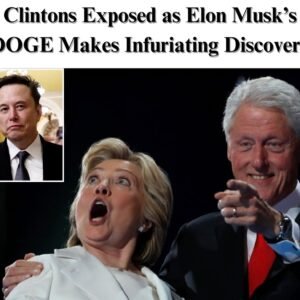I. Introduction
A heated online exchange has erupted between political heavyweights over government spending oversight and transportation infrastructure. Former Secretary of State Hillary Clinton clashed with Transportation Secretary Sean Duffy regarding DOGE, an entity led by Elon Musk, which aims to eliminate wasteful spending at USAID. The controversy intensified when Clinton criticized the administration’s handling of aviation safety following recent plane crashes.
II. The Debate Over Government Efficiency
At the heart of this dispute is the role of DOGE in streamlining government operations. Proponents argue that Musk’s leadership is introducing innovative technology to reduce inefficiencies. However, critics question whether DOGE’s personnel possess the necessary experience to oversee complex projects like aviation system upgrades.
III. Clinton’s Criticism Sparks Controversy
Clinton’s remarks on X (formerly Twitter) ignited the controversy. She questioned the qualifications of DOGE personnel, implying that they were too inexperienced to manage vital safety initiatives. This critique resonated with many who are skeptical of the administration’s approach to modernizing infrastructure.
IV. Duffy’s Fiery Response
Duffy quickly fired back, accusing Washington insiders of allowing inefficiencies to persist. He defended DOGE’s youthful workforce, emphasizing that entrenched bureaucrats had failed to improve transportation safety. Duffy also alleged that DOGE investigations had uncovered financial misconduct linked to the Clintons.
V. The Role of DOGE in Transportation Reform
DOGE’s involvement in aviation safety has sparked debate. While supporters see it as a step toward modernization, detractors worry about the risks associated with handing such critical tasks to a relatively untested team. The administration insists that leveraging new talent is essential for breaking long-standing inefficiencies.
VI. Aviation Safety Concerns Under Scrutiny
The recent plane crashes that occurred under Duffy’s tenure have placed increased pressure on the administration. Critics argue that these tragedies underscore the need for seasoned professionals, not experimental approaches, to oversee national transportation systems.
VII. The Broader Implications for Infrastructure
Beyond aviation, transportation safety concerns extend to rail accidents and chemical spills. These incidents highlight the need for comprehensive infrastructure reform, a challenge that both sides acknowledge but differ on how best to address.
VIII. Clinton vs. Duffy: Experience vs. Innovation
Clinton’s critique represents a broader debate between traditional experience and innovative approaches. While she stresses the value of seasoned leadership, Duffy champions a fresh perspective, arguing that the old ways have led to stagnation.
IX. Media and Public Reaction
The media has amplified this dispute, with opinion pieces dissecting the validity of both arguments. Social media has been flooded with commentary, with supporters and detractors weighing in on the effectiveness of DOGE’s strategies.
X. The Role of Congress in Transportation Oversight
Congressional hearings have further intensified the discussion. Lawmakers are divided, with some advocating for stricter oversight while others push for technological advancements to drive transportation safety reforms.
XI. The Political Cost of Online Clashes
Public perception plays a crucial role in political longevity. While these digital battles generate engagement, they also risk overshadowing substantive policy discussions, making it harder to build bipartisan consensus on pressing infrastructure issues.
XII. Government Accountability in the Spotlight
The back-and-forth highlights broader concerns about accountability in federal agencies. With taxpayer dollars at stake, the debate underscores the importance of transparency in government spending and efficiency.
XIII. The Future of Transportation Safety
The administration’s approach to reforming transportation safety will shape public confidence in its leadership. Whether DOGE’s methods prove effective or fall short will be a defining factor in this ongoing debate.
XIV. Balancing Innovation and Expertise
Striking the right balance between embracing innovation and maintaining expertise will be key. The challenge lies in leveraging technology while ensuring that crucial safety regulations and standards are upheld.
XV. Conclusion
As this political battle continues, the future of U.S. transportation policy hangs in the balance. The need for effective leadership, informed decision-making, and bipartisan cooperation remains essential for driving meaningful reforms that prioritize public safety and efficiency.
